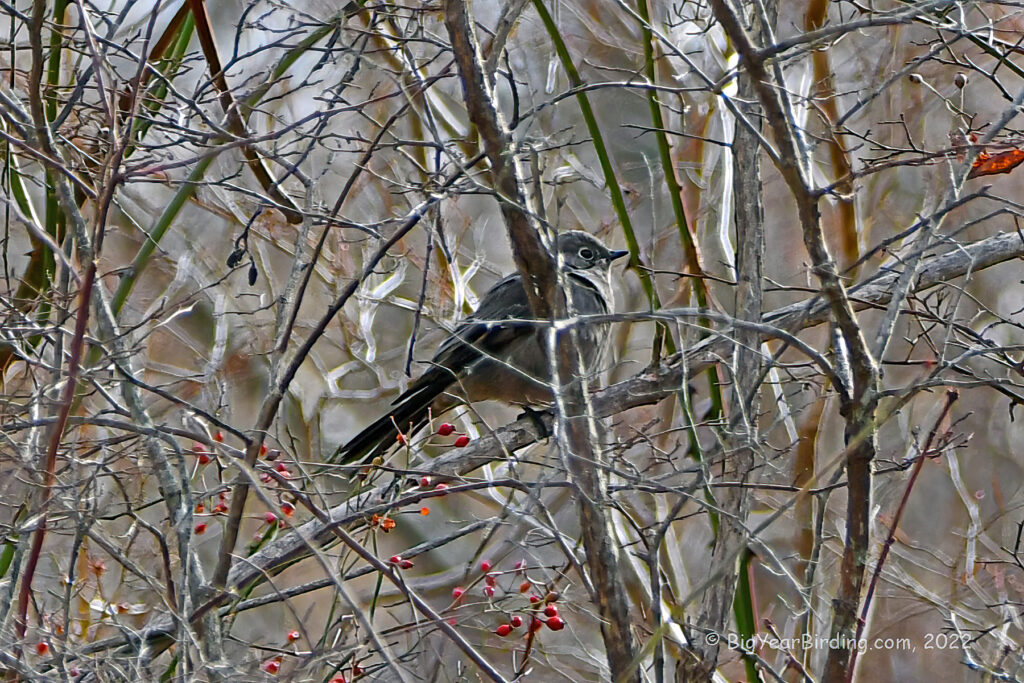
The Townsend’s Solitaire (Myadestes townsendi) is a medium-sized songbird that belongs to the thrush family. They measure about 7.5 inches in length and have a wingspan of around 12.5 inches. Adult Townsend’s Solitaires weigh between 1.2 to 1.6 ounces and have a plump body, a relatively short tail, and a round head.
The most distinguishing field mark of the Townsend’s Solitaire is their gray plumage, which is paler on their underparts and darker on their upperparts. They also have a distinctive white eye ring and a gray cap on their head. In flight, their wings and tail show a rust-colored patch, which is most visible when they are perched.
Townsend’s Solitaires are resident birds and are found throughout the western United States, ranging from southern Alaska to northern Mexico. They are typically found in open montane forests, often perching on high, exposed branches, where they scan the ground for prey. They feed primarily on insects and other invertebrates, but they also consume berries during the winter months.
Townsend’s Solitaires have a melodious and variable song, which they often sing from a high perch. Their song is often described as flutelike, with a descending series of notes. They also have a harsh call note, which they use to alert other birds of potential threats.
The Townsend’s Solitaire is a solitary bird, but they are not uncommon and can be seen and heard throughout the year in their range. They are not considered a migratory bird, and they remain in their breeding and wintering territories throughout the year. Their habitat preference, however, makes them vulnerable to habitat loss due to urbanization, logging, and other forms of human disturbance.
Despite their name, the Townsend’s Solitaire is not actually a true solitaire, as they are part of the thrush family. They are an important species for forest conservation efforts, and monitoring their populations can help provide insight into the overall health of montane forest ecosystems.
